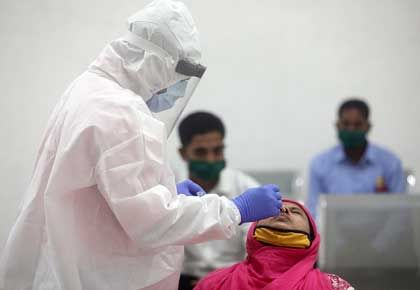'That allowed us to learn from the rest of the world, on what worked, what didn't work, both in terms of prevention and in terms of treatment.'
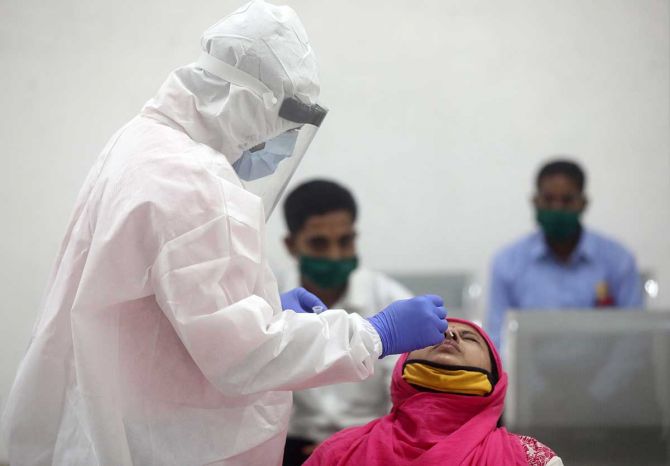
The future appears bleak.
Dark.
This virus has distressingly moved in long-term.
Europe is back in lockdown with a second even more violent wave.
America appears to be going through its third peak.
Is another wave going to hit us?
What's in store for India?
How do we make sense of our daily life and the days ahead?
Leading Indian medical expert, Dr Gagandeep Kang's views are reassuring.
She has a sturdily commonsensical and measured approach and picks out some important comforting truths from the hazy, confusing mess that is COVID-19-infected India.
Like, for instance it will never be as bad for us, because we are protected by our masks and social distancing -- tools that New York and Italy did not have and America still does not use.
Or that India is not struggling with that many cases of severe COVID-19 as opposed to moderate cases.
Dr Kang -- at present professor of microbiology, at the Wellcome Trust Research Laboratory, division of gastrointestinal sciences at the Christian Medical College, Vellore, Tamil Nadu -- has worked in public health for several decades, especially in the area of rotavirus and typhoid.
She has also long experience in vaccine development and vaccine trials, in relation to rotavirus, typhoid and cholera, and working with Indian companies who developed WHO-approved vaccines.
The executive director till July of the Translational Health Sciences and Technology Institute, a public health research institute under the ministry of science and technology, when COVID-19 arrived in India Dr Kang's expertise was in evidence as she worked on indigenous solutions via vaccines and drugs and offered advice on public health policy for the disease, including apparently insisting that the private sector be roped in for testing.
The first Indian woman to be nominated a fellow to the eminent Royal Society, the oldest independent scientific academy, dating back to the 1600s, she is also the first Indian woman member of the Fellowship of the American Academy of Microbiology
Dr Kang discusses with Vaihayasi Pande Daniel/Rediff.com vaccines, rural spread of COVID-19 and encourages every individual to look at personal actions, in this virus-governed climate, through a risk versus benefit prism.
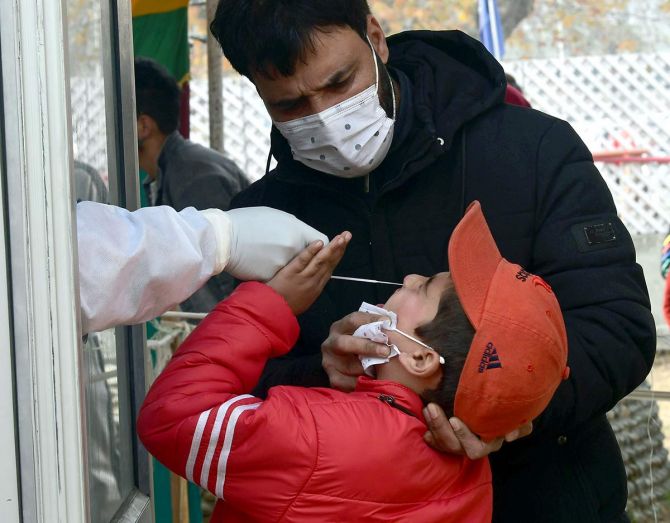
What does the India position look like to you?
What's good about it?
What's not?
Has the story gone the way everybody feared?
The numbers are still galloping ahead in the places where COVID first hit.
India is a very large country, and it's very hard to make predictions.
We behave more like Europe than one country.
What do you feel about India's position?
I think, if you look at the virus itself and how it has affected different parts of the world and how it's responded to measures that governments and individuals have taken, we have a clearer picture of what it takes to handle the virus now.
In terms of how India is doing: It's not unexpected to see a very large number of cases.
If you look at the trajectory, what are you looking for?
You are looking for a trajectory that does not go into an exponential phase too quickly, and essentially crashes systems.
In a large country like India you will have case numbers that climb, climb quite rapidly.
Healthcare systems start to become stretched.
And then do they cope or do they not cope?
In some situations, early on, we saw examples of where health systems (in India) were not coping.
But many of those occurred at an early stage where the guidance that was given had not fully engaged the private sector.
The government was trying to handle things largely by itself (then).
We are not in that situation now.
And we are no longer seeing the kind of situations that was depicted earlier, where the newspapers were highlighting that there were two patients in a bed and somebody is with a dead body.
Even at that stage, that would have been the exception, rather than the rule.
But those exceptions were happening at that time.
These were likely to be rare events.
At that stage, it was a symbol of a system that hadn't coped with the numbers that were being seen.
We are not seeing those situations now.
If we look at the trajectory: The trajectory isn't the way it was in Europe or the US.
Yes, the numbers have gone up.
But we have a huge population.
We have a huge land area.
And in terms of the testing that is being done, we are not seeing positive tests that have reached, let's say, the 20 or 30 per cent barrier.
If anything, over time, the test positivity rate seems to be coming down.
Some of that can be attributed to the fact that we are using a fair amount of rapid antigen tests.
Even with that -- you know you can do a correction factor -- but even with that, the positivity rates are declining.
The one thing that I think really matters is how much severe disease do you have?
Are hospitals overburdened and the second is how many deaths do you have?
Even if you say: India undercount, India does not report deaths.
It still looks like mortality rates in India and in Africa seem to be lower than in other parts of the world.
That may be a factor of not having the highest risk population in similar proportions. Right?
Our population is younger.
But even with that, I think we are seeing lower (number of cases of) severe disease and probably lower levels of mortality, at least at the moment, with the data that we now have.
If you want to look at mortality, it is very difficult to count correctly attributed deaths in the context of a pandemic, practically anywhere in the world.
Even in the best health care situations, attributions are hard, because people can die for multiple reasons, even when they are infected.
Did you die because of COVID-19?
Did you die with COVID-19?
How much of a difference does it make for somebody with a comorbidity?
If I have diabetes, and hypertension, and I develop a COVID-19 infection, and I die in one week versus the fact that my diabetes and hypertension was uncontrolled and I would have died five years later.
As opposed to a healthy person, who with COVID-19 dies today, but who might have had 20 or 30 years of life left.
These kinds of calculations are very hard to do in an emerging, evolving situation.
In the US, it's been calculated now -- if you wear a mask this is how many years of life you will save.
This is the loss of life that COVID-19 has had, up to this time, 2.5 million years or some such thing.
Those kinds of calculations are difficult to do.
But they do allow you to quantify the impact of an epidemic.
We aren't there yet.
Overall, I'd say, India's trajectory has been slow -- lots of numbers, lots of infections.
Those will continue to increase over time.
We were lucky, in many ways, that we got the disease late.
That allowed us to learn from the rest of the world, on what worked, what didn't work, both in terms of prevention and in terms of treatment.
That may also have led to the better outcomes that you're seeing.
Younger populations, natural resistance, temperature (climate), being late in the epidemic, and having better treatment protocols -- all of these would have contributed to lower mortality.

Basically, we have never seen a New York- or Italy-like situation till date.
But what you're also saying is we may never see a New York-like situation, either?
Well, I don't think we will, because now we've learned what to do. Right?
If you can ensure that you have social distancing, and masking, that's going to decrease your transmission rates in any case.
We have learned that some people spread more infection.
The bulk of people don't spread infection.
Whether they are symptomatic or asymptomatic, it does seem like there is a small proportion of people that spread a lot of infection.
Now if you can catch that flare up, the grouping clustering of infection and prevent further transmission from those, that really slows down transmission of the disease.
You may not get perfect control.
But you will get a slower spread, which means that your health systems will be able to handle things better.
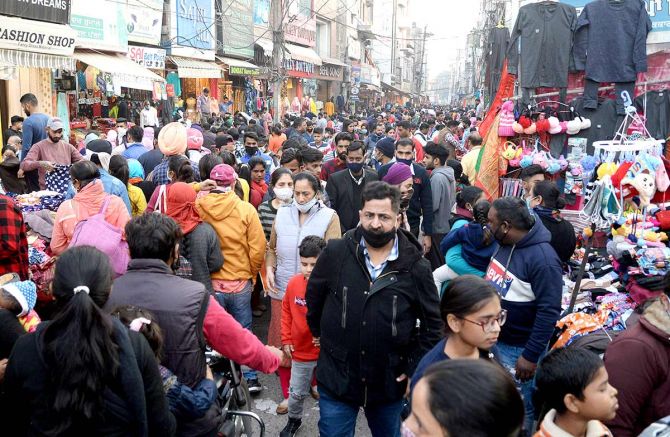
Predictions are very hard to make about a country like India with so much landmass and population, but is there anything that one can predict?
That numbers will continue to increase at some level for a long time to come.
I don't think that we are going to wind up being a China in the very near future, where we will have only imported infections.
Given the nature of the virus, given the nature of our population and our people, we are not, in the near term, going to be able to achieve such levels of control.
That, to me, is, I think pretty clear.
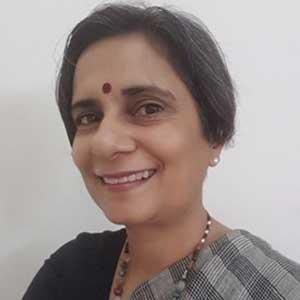 IMAGE: Dr Gagandeep Kang
IMAGE: Dr Gagandeep KangThe trajectory will slow.
Behaviour will change.
But how slow that trajectory (will become) -- there are all the warnings that you're hearing about the festival season and what people should be doing are important.
The other warnings are about any kind of clustering events, which are important.
Also important is continuing to emphasise that people who are infected do need to be out of circulation for two weeks.
And those around them should be testing.
Testing and tracing are going to be critical.
I hope that as the trajectory of growth slows -- we are on a downward slope now -- we should get to a stage where it will be possible for us to improve the contact tracing and testing.
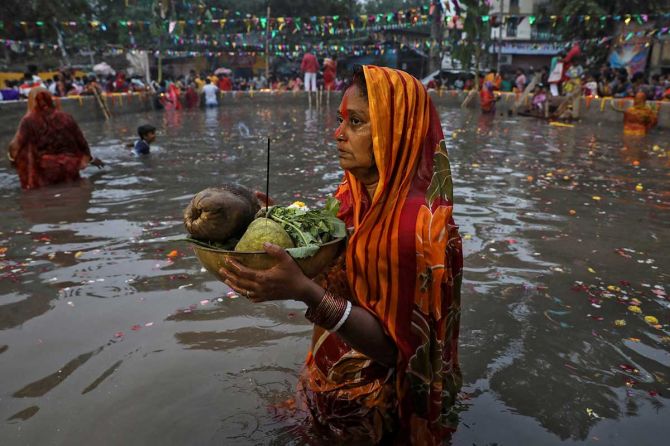
You're saying that it's not just about festivals.
A cluster infection can happen for any reason?
Clusters of infections can happen.
If you look at super-spreading events, those are currently unpredictable.
Why can one person encounter 20 other people and infect nobody?
Whereas another person encounters 20 people and spreads it to 60.
We don't understand the reasons why that is happening.
And that's what makes controlling spread, without being able to screen absolutely everybody all the time so difficult to do.
You can do that within closed settings, where you're encountering the same people again and again.
There you can make sure that you test a lot and keep removing from circulation those that are infected.
When there is contact not within a group, but within multiple overlapping groups of people, containing spread becomes a little bit difficult.
But even there, you have the option of being able to slow things down if you can ramp up testing and tracing.
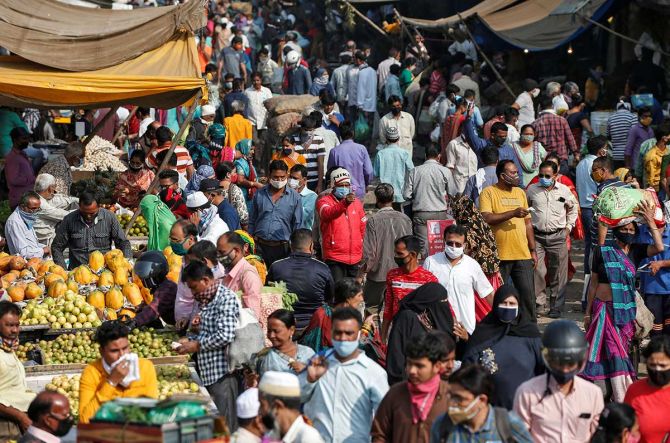
The central government health minister Dr Harsh Vardhan recently said that the next three months are critical.
But it seems like we're puttering along, as expected.
How can it get that much worse?
And how can it get that much better in this three-month period?
Or is that just a way of insuring that people be more careful.
Take a look at the US.
If you look at the US, you had one peak and then it looked like it was coming down and you got a second higher peak and now it's picking up again.
India was catching up with the US, in terms of numbers of cases, even though we have five times the population.
But now, we are not.
The distance is widening, because India is on the downward slope and the US has started going up again.
That is down to (because of) the way people behave.
The health minister emphasising that we need to be responsible and not spread infection, is the right message, whether it is the health minister or anybody else.
Ultimately, slowing the spread of this virus is down to basic principles of public health.
If the host of the virus is people, people spread it from one to the other.
As long as people don't come in contact with other people, you will slow the spread.
Look out for Part II of the interview with Dr Gagandeep Kang, where she sheds light on vaccines and explains the rural situation in the context of COVID-19.
Feature Presentation: Ashish Narsale/Rediff.com
